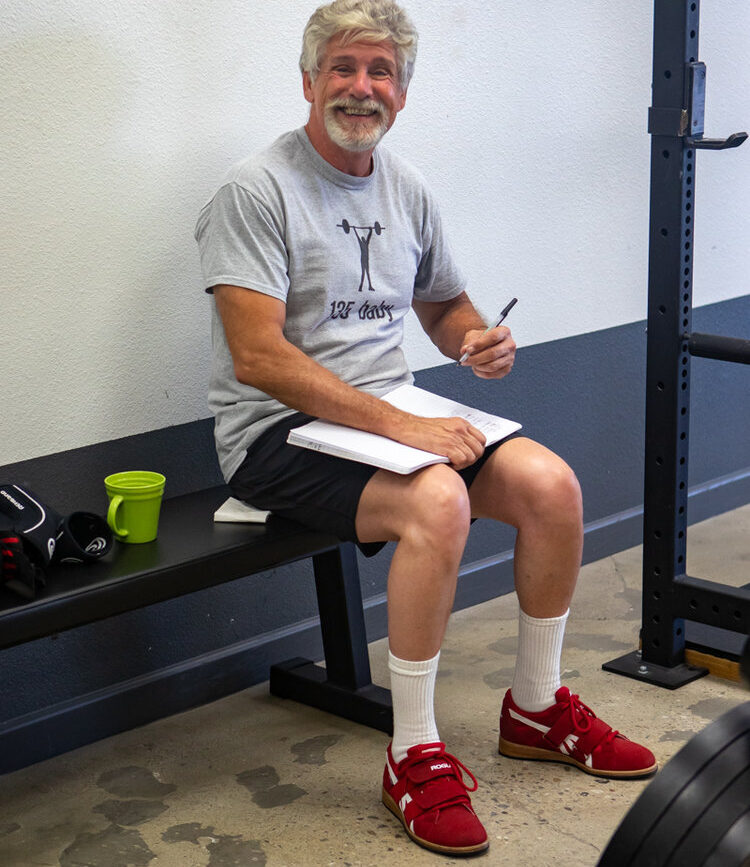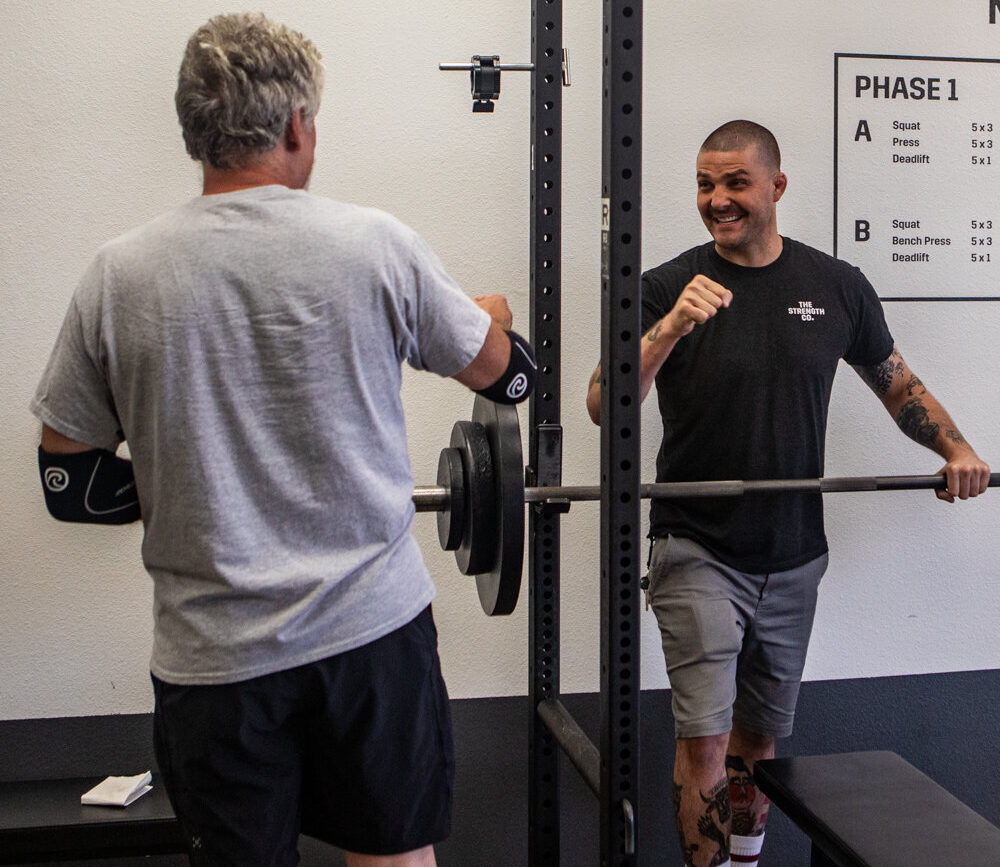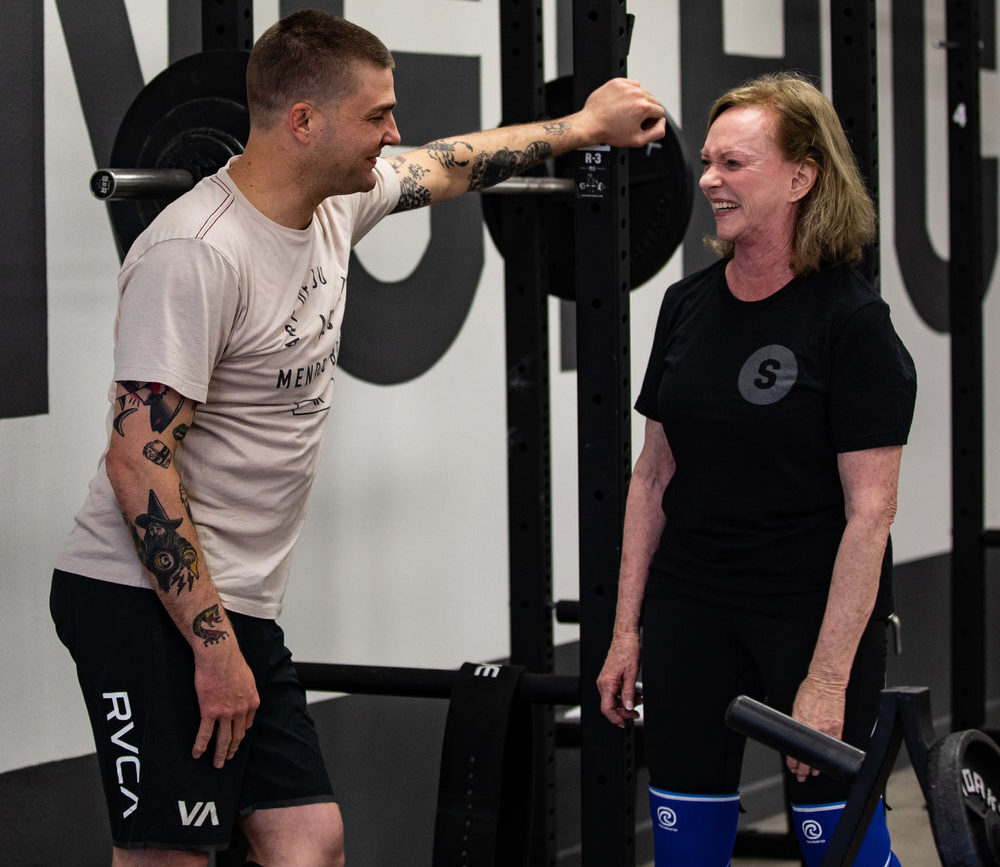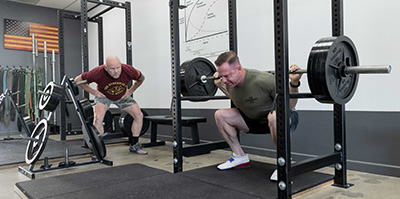Things Every New Barbell Lifter Should Know
by Jeff Hairston, SSC
As a barbell coach, I love teaching the new lifters in our gym. Strength training is a practice that changes peoples lives and I have found this part of my teaching to be very rewarding.
I wanted to write a short article that covers the most common tips I have for beginners to get the most of out their first training sessions. Just because you are new to lifting weights does not mean that you cannot attack your first sessions like a pro.
Footwear

Photos all by R. A. MITCHELL, http://www.ramitchell.net/
During your very first lifting session you probably performed the barbell lifts wearing Vans or Chuck Taylor’s, but to get the most out of your training you will need a pair of proper lifting shoes. Most shoes have a squishy sole which is no good for lifting because they fail to provide a solid platform for you to squat, press, and deadlift from.
A good lifting shoe will have a hard sole, a heel, and tarsal strap. Two shoes I recommend are the Adidas Powerlift and the Do-Win classic lifter. Getting a pair of shoes will increase performance and safety immediately.
Logbook

Photos all by R. A. MITCHELL, http://www.ramitchell.net/
The importance of a well-kept logbook cannot be overstated. Think of your strength training as data gathering. Your logbook is the place where you record all your data. A legible logbook is worth its weight in gold for the lifter and the coach.
At the top of each training session I recommend writing the date and day of the week. Write down your lifts as Weight x reps x sets, for example (Squat: 315x5x3). The goal is to make the book easy to read for you and your coach. At the end of each workout check-in with your coach and ask about your increases for next session.
Be sure to note your increases next to each lift, for example if I told you to add five pounds to your squat your logbook should look like this (Squat: 315x5x3 (+5)).
Setting up your rack
One of the most challenging things for new lifters is setting up their rack. Here are some quick and dirty tips to make sure your rack is set up quickly and properly for each lift each training session. You will squat inside the rack above the safety pins.
The Squat:

Your J hooks should sit at a height where the bar is roughly mid sternum. You should not have to “tippy toe” in or out of the rack when you squat. You also do not want the hooks so low that when you attempt to re-rack the bar it gets hung up on the top of the J hooks. You need 2-3 inches of clearance above the hooks when you’re standing with the barbell.
Novice lifters often forget to set their safety pins. Set your safety pins at the beginning of each session before you start warming up. I recommend that the safety pins sit about 2-3 inches below the barbell when you’re at squat depth. This way if you fail the squat you can safely squat down a few inches below your usual depth and rest the bar on the pins.
The Press:
For the press, your J hooks will be set the same height as they are for the squat but outside of the rack for the sake of clearance.
The Bench Press:

On the bench press you can measure the approximate height of the J hooks by putting your fist down on the bench with a straight arm and using the height of your shoulder as a reference for the J hook. From this rough J hook approximation, you can adjust up or down as needed. Again, you will want a couple inches of clearance above the hooks when you rack and un-rack the barbell.
Your safety pins will assume a height where when your back is arched you will not hit the pins, but if you were to relax your arch and lay flat you could lay the barbell safely down on the pins without it crushing you. You will have to practice arching and relaxing with an empty bar on your chest to find the correct pin height.
Once you’ve figured out the correct J hook and safety pin positions for all the lifts, I recommend taking pictures for reference until you’ve committed it to memory. Being able to set up your rack correctly, quickly, and efficiently will save you time and keep you safe.
Warming UP
One of the biggest areas I see lifters struggle in the gym is with their warm-up. A little bit of preparation goes a long way. Time permitting, I recommend writing out your work weights and warm-ups for your next session at the end of each previous session.
The warmup sets do not require rest. You can load the weights and go through your warm-up sets consecutively without resting in between. Warming up in this fashion will prepare the body for the work it’s about to do and save you time you can then use for the rest between your work sets.
When you get to your last warm up make sure to call your coach over and tell them you’re ready. Getting coached on your last warmup helps you and the coach prepare for the work sets ahead.
Use a timer
Using a timer for your rest period is critical for a couple reasons. Setting a timer will keep you on a schedule and prevent you from waiting too long between sets. Also, using a repeatable rest period is another way that we keep the data we are gathering accurate. During your novice linear progression 3 minutes between sets will be enough. Your coach will tell you when it’s necessary to take more rest time between sets.
On a larger scale, keep an eye on the clock and how long it’s taking you to complete each lift. Squat should be completed in 30-40 minutes, pressing movement in 20-30 minutes, and Deadlift in 15-20 minutes. A novice early on in their progression should be completing their workout in about an hour.
As linear progression continues, and weights increase, and rest times increase so will the length of the training session. No one during their first year of lifting should have training sessions that take longer than 90 minutes. If you find that your training session is taking too long your rack setup and warmup is most likely the culprit.
Be consistent
Consistency is more important than any other factor in the gym. It’s more important than your program and it’s more important than your protein intake. Being consistent is the easiest and hardest thing to do.
Rather than making a goal of how much weight you want to lift; I encourage you to make a goal of how consistent you’ll be. Set a goal of how many days a week you are going to train (I recommend 3) and stick to it for 3 months, you’ll be amazed at what can be accomplished with consistency.
Do not compare yourself to others

Photos all by R. A. MITCHELL, http://www.ramitchell.net/
A big pitfall for lifters is the tendency to compare themselves to others. I encourage you to watch other lifters movements and try to learn from them, but I do not recommend comparing your weight on the bar to theirs. Strength is measured over months and years rather than days and weeks.
The only person it is beneficial to compare yourself to is yourself. If you begin to get frustrated with your training — open your logbook to the first page and look at your intro lesson. I promise you’ll feel much better about how you’re doing.
Hitting PR’s and adding more weight to the bar is fun but having the strength to do all the activities you love to do and meet all the challenges you’ll face is what strength training is all about.

